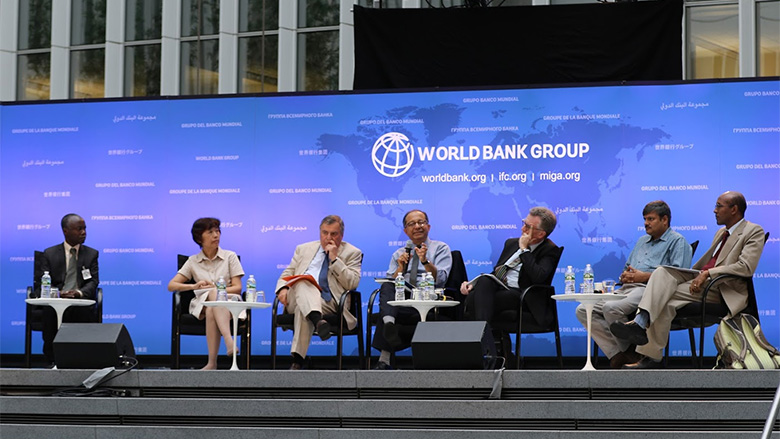Monitoring Global Poverty Report Now Available
The recommendations on how to more comprehensively measure and monitor global poverty in the light of the World Bank’s goals of ending extreme poverty by 2030 and boosting shared prosperity are now available. Read More »
Read Cover Note (PDF) | Download Report (PDF)
Background
In 2013, the World Bank Group announced two goals that would guide its development work worldwide. The first is to end extreme poverty, that is, to bring the number of extremely poor people, defined as those living on less than $2.15 dollars a day (in 2017 Purchasing Power Parity), to less than 3% of the world population by 2030. The second is to boost shared prosperity, defined as promoting the growth of per capita real income of the poorest 40% of the population in each country.
In September 2015, UN member nations agreed to a set of post-2015 Sustainable Development Goals (SDG), the first and foremost of which is the eradication of extreme poverty everywhere, in all its forms. Both the language and the spirit of the SDG objective reflect the growing acceptance of the idea that poverty is a multi-dimensional concept that reflects multiple deprivations in various aspects of well-being. That said, there is much less agreement on the best ways in which those deprivations should be measured; and on whether or how information on them should be aggregated.
Objective
In this context, the World Bank Group’s Chief Economist decided to convene a high-level commission, the objective of which was to advise the Bank on how to measure and monitor global poverty with the above background in mind. The Commission’s final report provided advice to the Sr. Vice President and Chief Economist and Senior Management more broadly, in mid-October, 2016.
The Commission focused on a few main areas, outlined below, as well as other related ideas as deemed fit by the Chair of the Commission:
- The first was relatively technical. Since the goal of trying to end extreme poverty by 2030 had already been set, advice was being sought on the meaning of “holding constant” the poverty line in real terms. What does it mean to hold the line constant at $1.25 PPP-adjusted (2005), which was the extreme poverty line when the goal was set, when prices are changing, as are exchange rates? Further, should we use the standard PPP indices or make corrections for the fact that the poor do not consume the same basket of goods as the average person in a society?
- The second question asked the Commission to go beyond the above poverty measure to more general advice on other kinds of poverty the Bank should track and use to guide policy. Should we track poverty based on other lines--$4, $10, and so on? Should we be concerned about the depth of poverty below the line? Should we collect and collate data on the many human and social dimensions of poverty that go beyond the money metric? Should these be aggregated or left as vectors?
Outcome
The commission was chaired by the late Sir Tony Atkinson and is no longer active. The commissions’ work resulted in 21 recommendations, which the World Bank Group responded to. Since then, a number of the recommendations have been taken up by the World Bank Group. For example, in 2018 the World Bank Group adopted a societal measure of poverty and a multidimensional measure of poverty. In 2022, the World Bank Group launched the Poverty and Inequality Platform, which, in response to the commission’s recommendations, contains country level statistical reports, the principles underlying household survey data selection, and much more.
Last Updated: Feb 10, 2023
